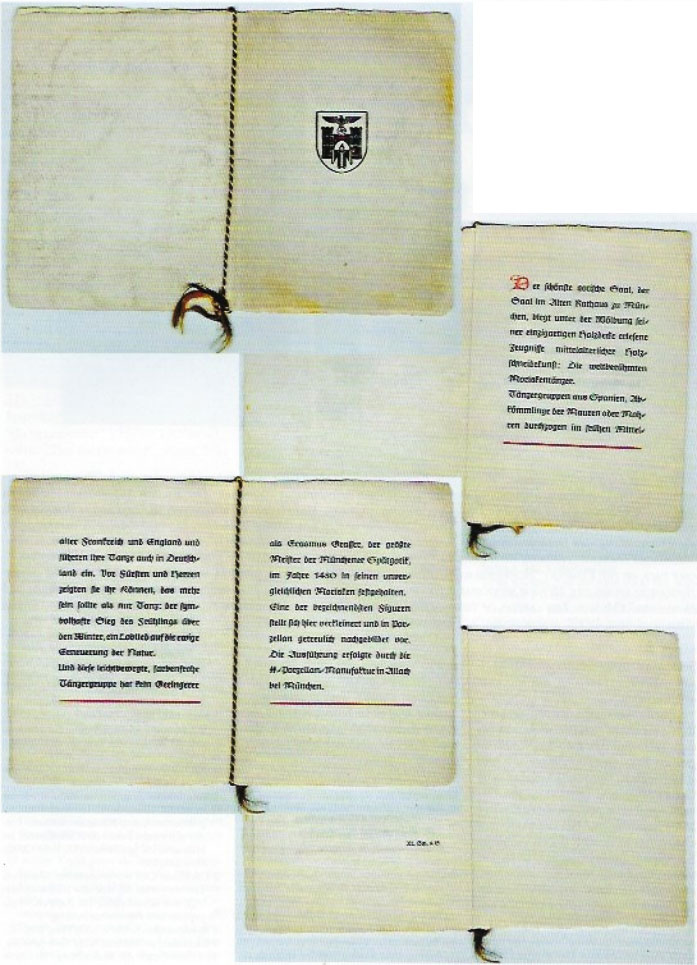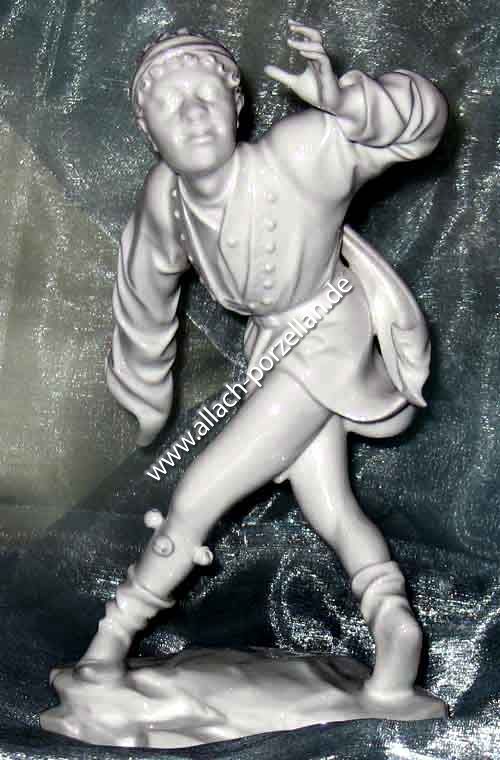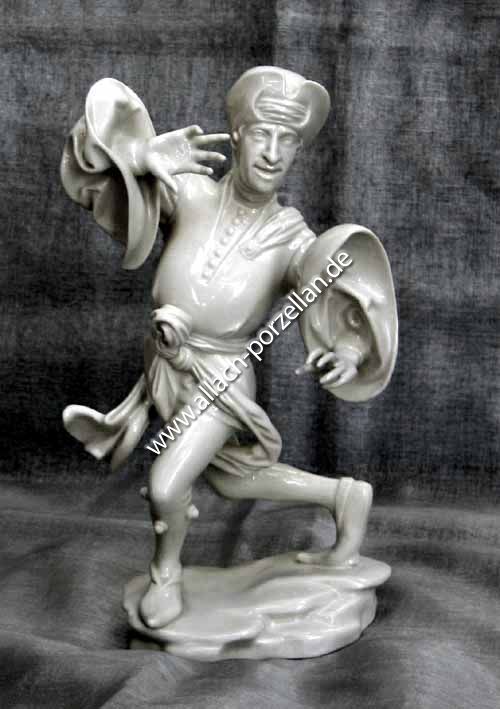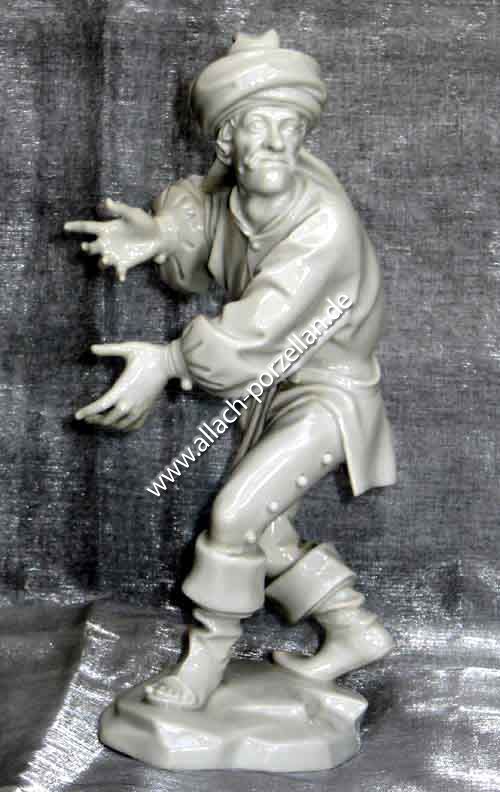Morisks
The group of Morisk dancers was designed by Richard Förster on behalf of the city of Munich and served as gifts for high-ranking people from politics and state guests or on special occasions. This series consisted of the five following figures: “The Mohr” “The Prophet” “The Smart” “The Astute” and “The Farmer”.
The original figures were made by Erasmus Grasser in 1640. Of the 16 wooden sculptures at that time, which adorned the dance hall in the old town hall, 10 are still preserved and are now exhibited in the city museum.
The morisks were issued in special gift boxes and a text booklet with information.
The scaled-down models created by Richard Förster are believed to be the most exact copies of the wooden figurines by Erasmus Grasser, since the sculptor had direct access to the originals and had the opportunity to inspect them from all sides in his studio and then make the models with sufficient time.
The public displays of the Morisks dancers also led to requests from the Allach porcelain manufacturer for over-the-counter items. As the five morisks were made exclusively and only for the city of Munich, the Allach porcelain manufacturer was unable to satisfy the public purchase interest and decided to have similar figurines designed by the artist Richard Förster. The series of juggler figurines was created. See jugglers for more information.
The group of Morisk dancers was designed by Richard Förster on behalf of the city of Munich and served as gifts for high-ranking people from politics and state guests or on special occasions. This series consisted of the five following figures: “The Mohr” “The Prophet” “The Smart” “The Astute” and “The Farmer”.
The original figures were made by Erasmus Grasser in 1640. Of the 16 wooden sculptures at that time, which adorned the dance hall in the old town hall, 10 are still preserved and are now exhibited in the city museum.
The morisks were issued in special gift boxes and a text booklet with information.
The scaled-down models created by Richard Förster are believed to be the most exact copies of the wooden figurines by Erasmus Grasser, since the sculptor had direct access to the originals and had the opportunity to inspect them from all sides in his studio and then make the models with sufficient time.
The public displays of the Morisks dancers also led to requests from the Allach porcelain manufacturer for over-the-counter items. As the five morisks were made exclusively and only for the city of Munich, the Allach porcelain manufacturer was unable to satisfy the public purchase interest and decided to have similar figurines designed by the artist Richard Förster. The series of juggler figurines was created. See jugglers for more information.
Here you will find all available products related to this page:
No Results Found
The page you requested could not be found. Try refining your search, or use the navigation above to locate the post.
No Results Found
The page you requested could not be found. Try refining your search, or use the navigation above to locate the post.
No Results Found
The page you requested could not be found. Try refining your search, or use the navigation above to locate the post.








